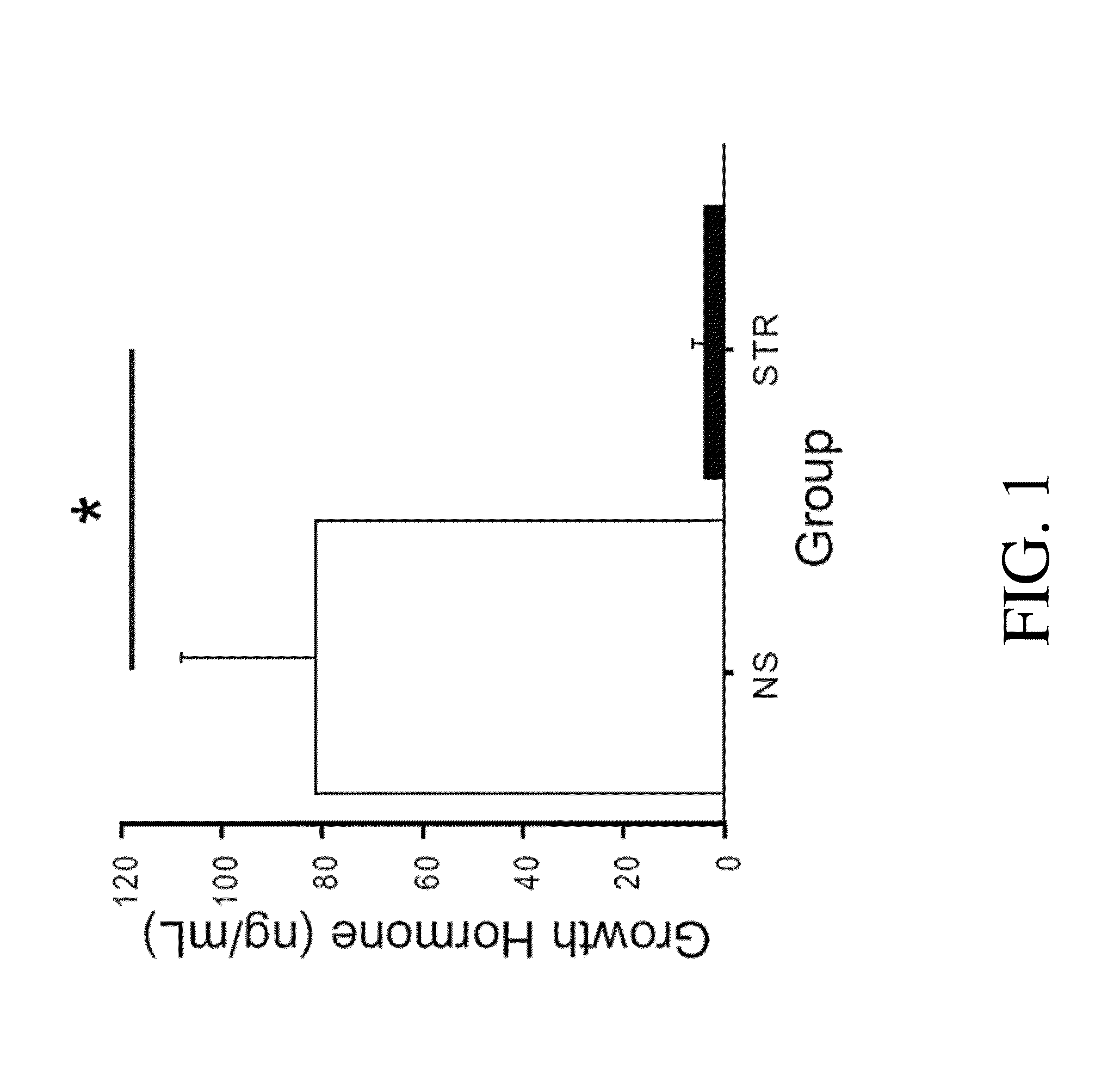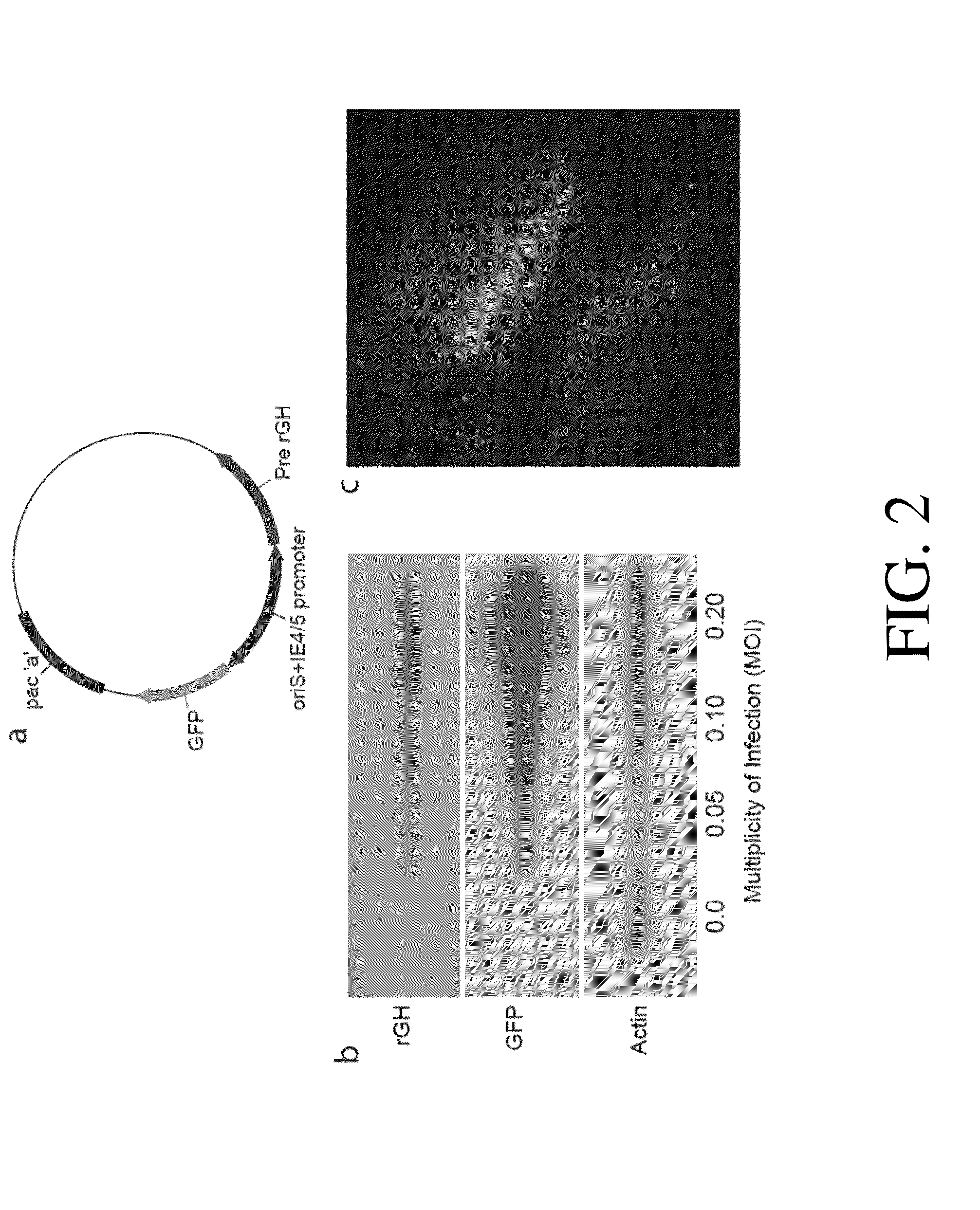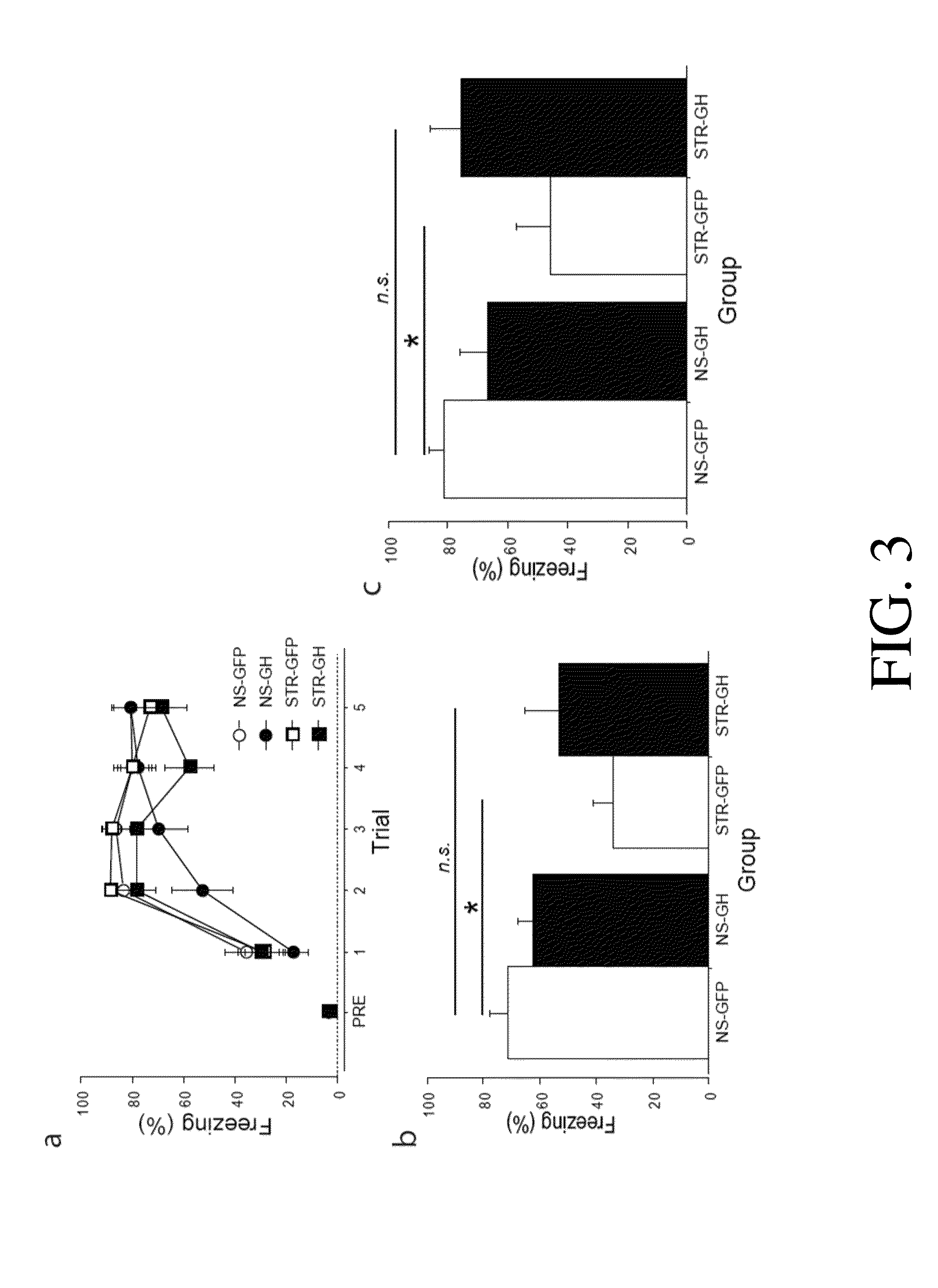Use of antagonists of growth hormone or growth hormone receptor to prevent or treat stress-sensitive psychiatric illness
a technology of growth hormone and receptor, which is applied in the direction of nervous disorders, drug compositions, peptide/protein ingredients, etc., can solve the problems of difficult maintenance of adaptive change mechanisms and the possibility of maladaptation
- Summary
- Abstract
- Description
- Claims
- Application Information
AI Technical Summary
Benefits of technology
Problems solved by technology
Method used
Image
Examples
example 1
Examining the Association Between Loss of Growth Hormone in the Hippocampus and Stress-Related Changes in Hippocampal Function
[0103]In order to determine whether the loss of GH in the hippocampus was associated with stress-related changes in hippocampal function, an HSV-1 based amplicon was first constructed, in which the full-length gene for rat presomatotropin (rGH), the precursor molecule for GH (31), was co-expressed with green florescent protein (GFP) under the control of a viral promoter (FIG. 2A). This amplicon, as well as a control amplicon expressing only GFP, was packaged into replication-defective HSV viral vectors. These vectors were then used to infect dorsal hippocampus (FIG. 2C). A representative infection, showing high levels of expression in pyramidal cells of CAL is shown.
[0104]Methods:
[0105]Amplicon Construction:
[0106]The rat presomatotropin gene was cloned as an 818 bp
[0107]HindIII cut fragment from the p-RGH1 plasmid (31), provided by Dr. Douglas Weigent (Univer...
example 2
The Role of GH in Chronic Stress-Related Changes in Auditory Trace Fear Conditioning
[0120]The role of GH in chronic stress-related changes was first examined in auditory trace fear conditioning, a hippocampus-dependent task (36). Rats were repeatedly exposed to daily immobilization stress (STR) or handling (NS). One day later, rats received intra-hippocampal infusions of either GH or GFP virus. After three days for recovery, rats were subjected to auditory trace fear conditioning. Over the following two days, long-term contextual fear memory and auditory trace fear memory were assessed.
[0121]Methods:
[0122]Subjects:
[0123]Rats were treated as described in Example 2.
[0124]Experimental Methods:
[0125]Growth hormone ELISA, Protein (Western) Immunoblot methods are as described in Example 2.
[0126]Immobilization Stress:
[0127]Immobilization stress was administered for 4 h per day for 10 (contextual fear conditioning experiment) or 14 (trace fear conditioning experiment) consecutive days Anima...
example 3
The Role of GH in Stress-Related Changes in Foreground Contextual Fear Conditioning
[0134]To further investigate this, the role of GH in stress-related changes was also examined in foreground contextual fear conditioning, a hippocampus-dependent task (37). Rats were repeatedly exposed to daily immobilization stress (STR) or handling (NS). One day later, rats received intra-hippocampal infusions of either GH or GFP virus. After recovering for three days, rats were subjected to contextual fear conditioning. Long-term contextual memory was measured the next day.
[0135]Methods:
[0136]Subjects:
[0137]Rats were treated as described in Example 2.
[0138]Experimental Methods:
[0139]Growth hormone ELISA, Protein (Western) Immunoblot and Histology methods are as described in Example 2 Immobilization stress and Pavlovian Fear Conditioning were administered as described in the Methods of Example 2.
[0140]Results:
[0141]The effects of stress on contextual fear acquisition were dependent on the type of vi...
PUM
| Property | Measurement | Unit |
|---|---|---|
| pH | aaaaa | aaaaa |
| particle size | aaaaa | aaaaa |
| particle size | aaaaa | aaaaa |
Abstract
Description
Claims
Application Information
 Login to View More
Login to View More - R&D
- Intellectual Property
- Life Sciences
- Materials
- Tech Scout
- Unparalleled Data Quality
- Higher Quality Content
- 60% Fewer Hallucinations
Browse by: Latest US Patents, China's latest patents, Technical Efficacy Thesaurus, Application Domain, Technology Topic, Popular Technical Reports.
© 2025 PatSnap. All rights reserved.Legal|Privacy policy|Modern Slavery Act Transparency Statement|Sitemap|About US| Contact US: help@patsnap.com



